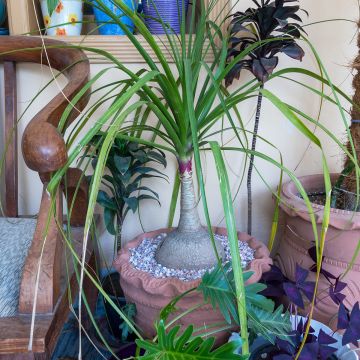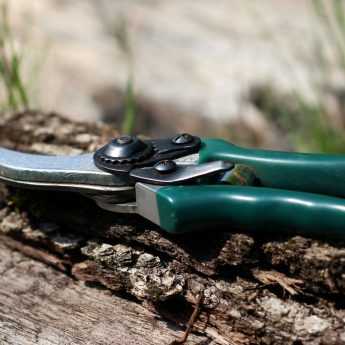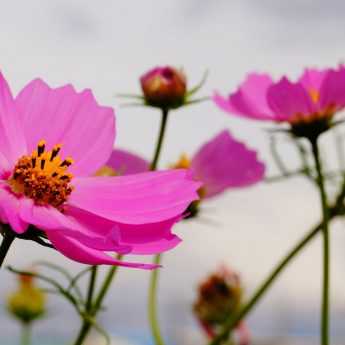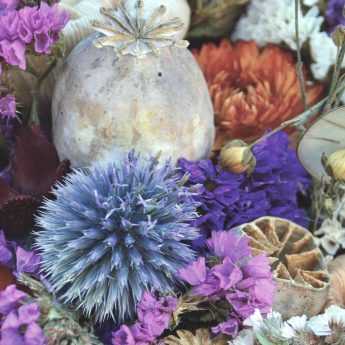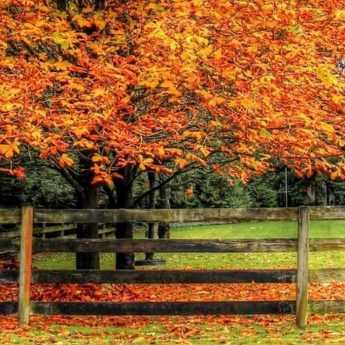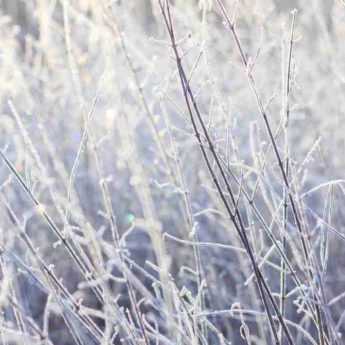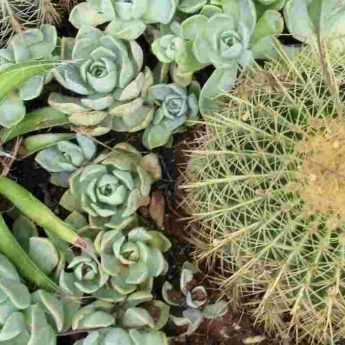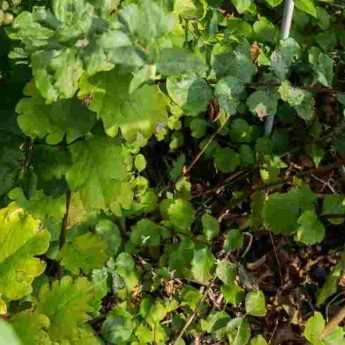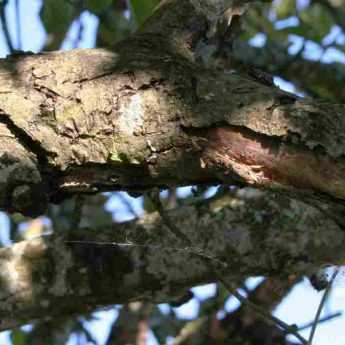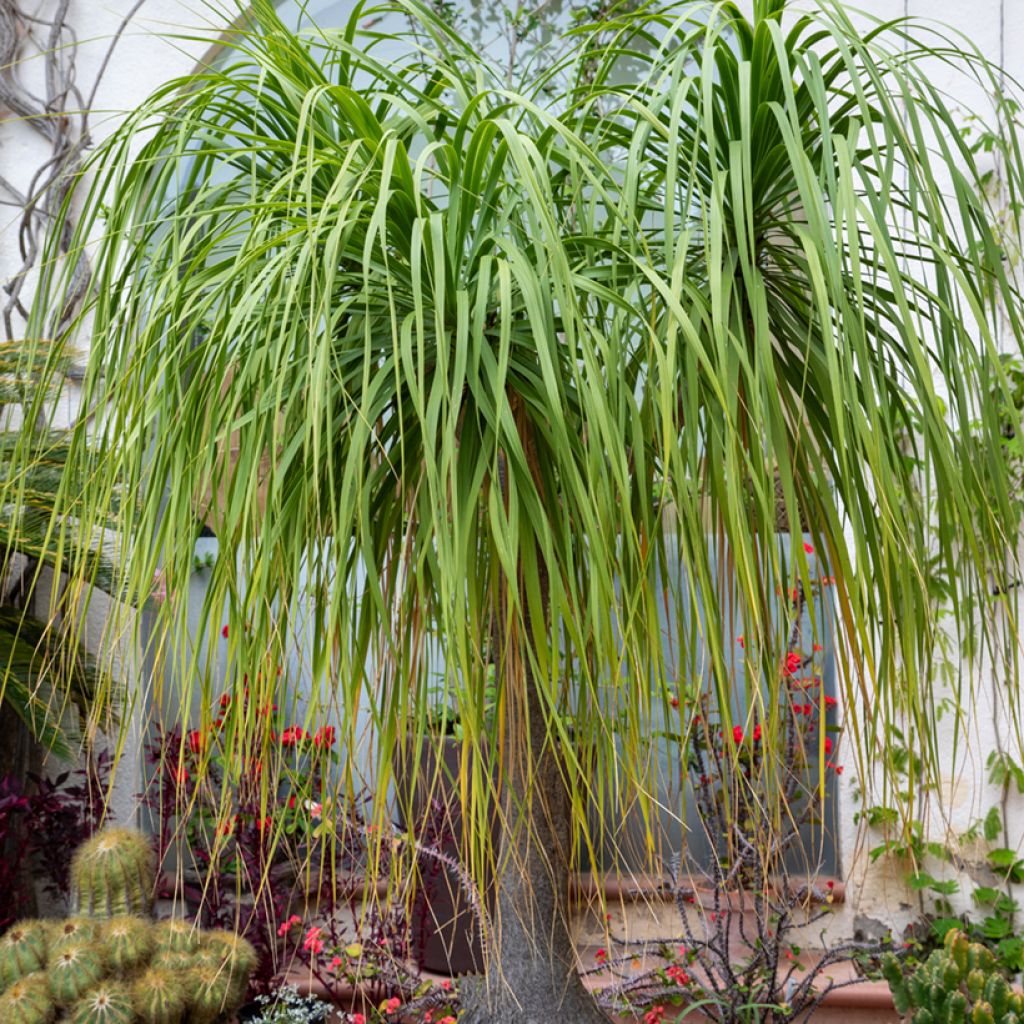

Beaucarnea recurvata - Elephant's foot seeds
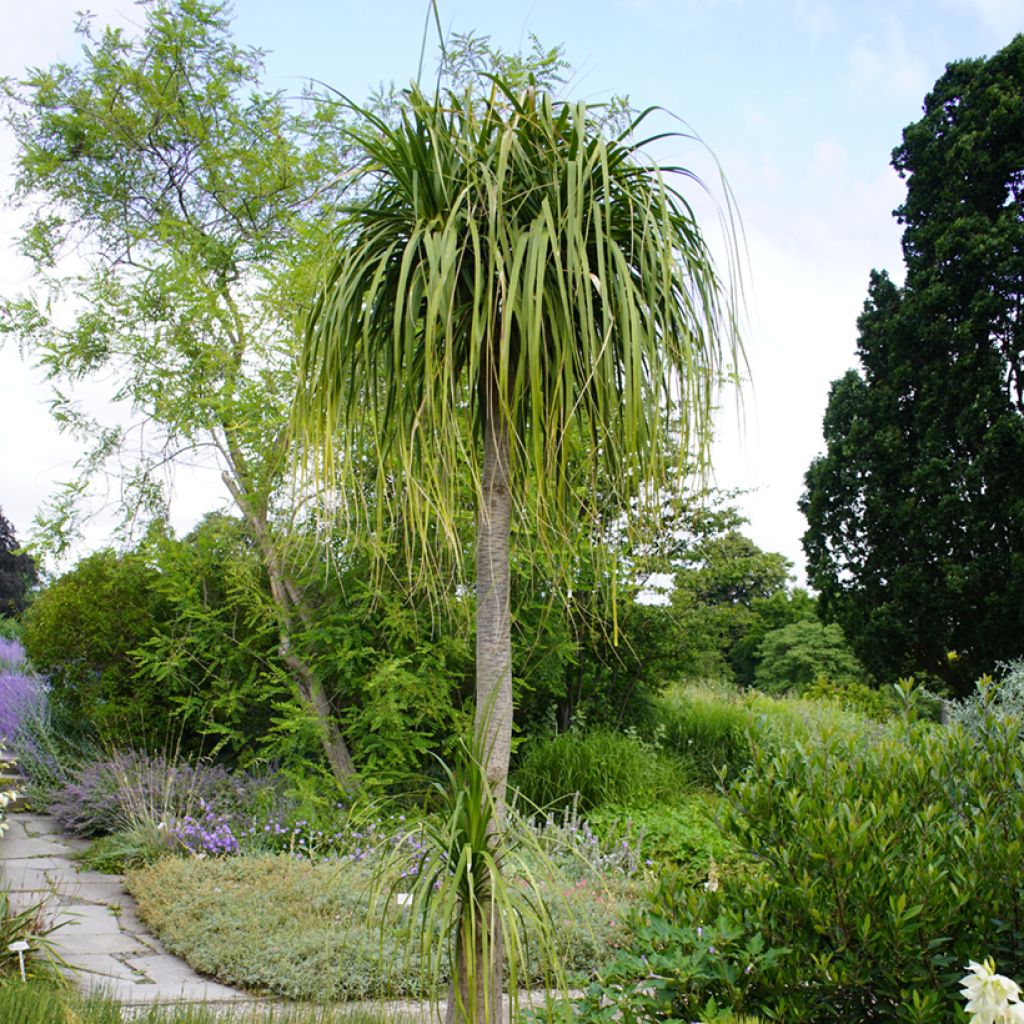

Beaucarnea recurvata - Elephant's foot seeds
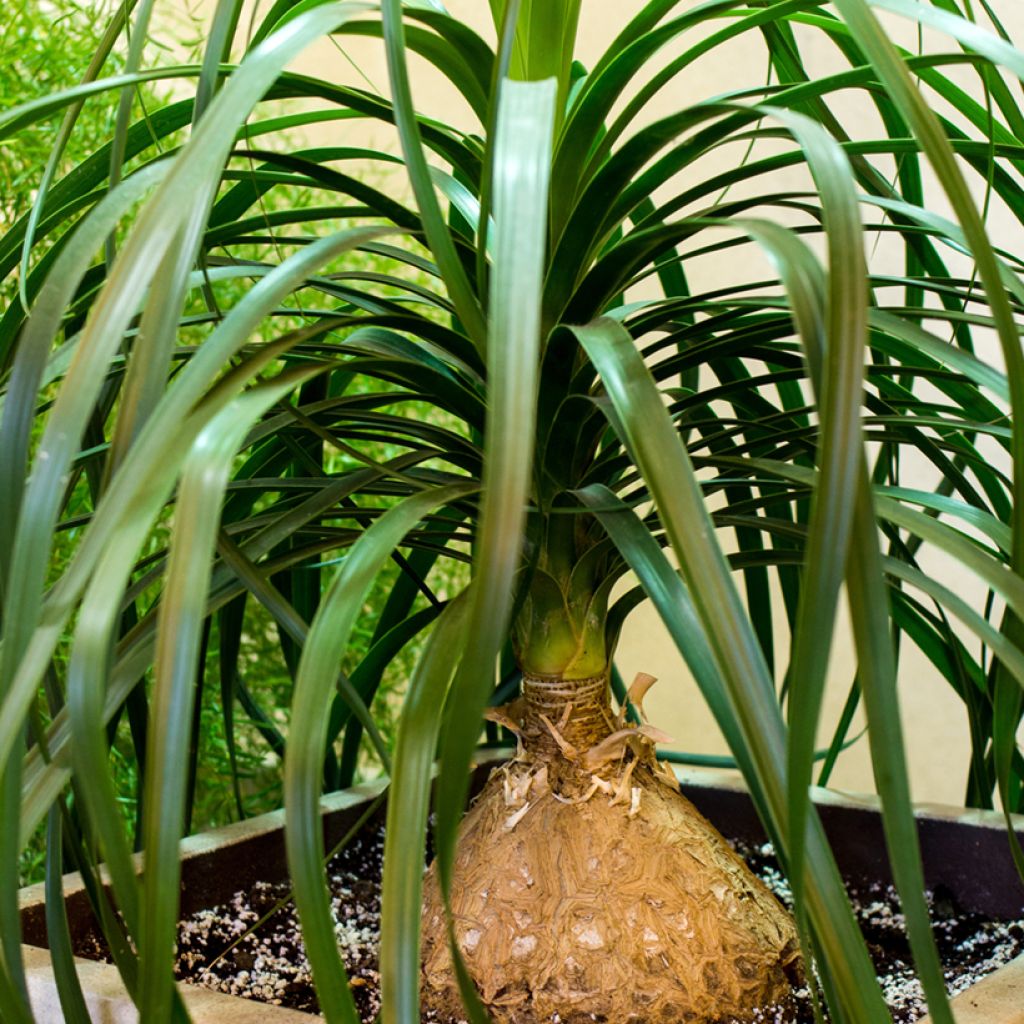

Beaucarnea recurvata - Elephant's foot seeds
Ponytail palm Seeds - Beaucarnea recurvata
Beaucarnea recurvata
Pony tail, Bottle palm, Elephant foot tree, Elephant's foot
Home or relay delivery (depending on size and destination)
Schedule delivery date,
and select date in basket
This plant carries a 6 months recovery warranty
More information
We guarantee the quality of our plants for a full growing cycle, and will replace at our expense any plant that fails to recover under normal climatic and planting conditions.
Would this plant suit my garden?
Set up your Plantfit profile →
Description
Recognisable at first glance, Beaucarnea recurvata, or elephant's foot, is captivating with its swollen trunk topped by a tuft of long, trailing leaves. Its growth is slow, but its unique appearance makes this bottle tree a highly decorative plant, whether indoors, or outdoors along the Mediterranean coast. Over time, it can produce a rather spectacular summer flowering: a cloud of small white flowers followed by equally decorative pink fruits.
Native to Mexico, where it grows in arid and rocky areas, Beaucarnea recurvata is a tree that can reach up to 9 metres in its natural habitat. Its swollen trunk, which stores water, allows it to withstand drought. It belongs to the Asparagaceae family, like Dracaena and Sansevieria. In our climate, it is mainly grown in pots but can adapt to open ground on the Mediterranean coast, provided it is protected from frost and excessive winter moisture. The Beaucarnea is undemanding: it prefers well-drained, light, and slightly acidic to neutral soil. It enjoys full sun but tolerates light shade. In pots, it can be overwintered indoors to protect it from the cold. Its frost resistance is limited (-5°C for a mature specimen in very well-drained soil). Its flowering, which only appears after many years, forms long, airy panicles towering above the foliage. But even without flowers, this plant remains spectacular with its elephant-skin trunk and long, slightly sharp evergreen leaves.
Sculptural and elegant Beaucarnea is perfect for an exotic atmosphere, both indoors and on a terrace in summer. It pairs beautifully with sculptural plants like Cycas revoluta, Phoenix roebelenii, or even Aeonium with their colourful rosettes. A must-have for lovers of original and easy-care plants!
Report an error about the product description
Flowering
Foliage
Plant habit
Botanical data
Beaucarnea
recurvata
Asparagaceae
Pony tail, Bottle palm, Elephant foot tree, Elephant's foot
Nolina recurvata
Central America
Other Ponytail palm - Beaucarnea
View all →Planting and care
Sowing Beaucarnea recurvata requires patience, as the seeds may have reduced viability. To maximise germination chances, start by soaking them in lukewarm water (25-30°C) for 24 to 48 hours. This softens their shell and facilitates germination. Adding a drop of hydrogen peroxide (oxygenated water) or a few grains of activated charcoal will limit the risk of mould.
Prepare a light, well-draining substrate, ideally composed of 50% sand or perlite and 50% sowing compost or coconut fibre. This mixture helps prevent excess moisture, which could hinder germination. Sow the seeds on the surface, pressing them in slightly (2 to 3 mm maximum), then water gently with a spray bottle. Cover them with a thin layer of sand or vermiculite to maintain moisture without encouraging fungal growth.
Place the container in a warm spot, between 22 and 28°C, avoiding direct sunlight. Using a propagator or a heating mat under the pot can help maintain a stable temperature. The substrate should remain lightly moist, without excess, water sparingly with a spray bottle.
Germination can be slow and irregular, taking between three weeks and several months, depending on seed viability and growing conditions. Once the young plants are well-rooted and reach about five centimetres in height, they can be transplanted into individual pots with a similar, well-drained substrate.
Sowing period
Intended location
Planting & care advice
This item has not been reviewed yet - be the first to leave a review about it.
Haven't found what you were looking for?
Hardiness is the lowest winter temperature a plant can endure without suffering serious damage or even dying. However, hardiness is affected by location (a sheltered area, such as a patio), protection (winter cover) and soil type (hardiness is improved by well-drained soil).

Photo Sharing Terms & Conditions
In order to encourage gardeners to interact and share their experiences, Promesse de fleurs offers various media enabling content to be uploaded onto its Site - in particular via the ‘Photo sharing’ module.
The User agrees to refrain from:
- Posting any content that is illegal, prejudicial, insulting, racist, inciteful to hatred, revisionist, contrary to public decency, that infringes on privacy or on the privacy rights of third parties, in particular the publicity rights of persons and goods, intellectual property rights, or the right to privacy.
- Submitting content on behalf of a third party;
- Impersonate the identity of a third party and/or publish any personal information about a third party;
In general, the User undertakes to refrain from any unethical behaviour.
All Content (in particular text, comments, files, images, photos, videos, creative works, etc.), which may be subject to property or intellectual property rights, image or other private rights, shall remain the property of the User, subject to the limited rights granted by the terms of the licence granted by Promesse de fleurs as stated below. Users are at liberty to publish or not to publish such Content on the Site, notably via the ‘Photo Sharing’ facility, and accept that this Content shall be made public and freely accessible, notably on the Internet.
Users further acknowledge, undertake to have ,and guarantee that they hold all necessary rights and permissions to publish such material on the Site, in particular with regard to the legislation in force pertaining to any privacy, property, intellectual property, image, or contractual rights, or rights of any other nature. By publishing such Content on the Site, Users acknowledge accepting full liability as publishers of the Content within the meaning of the law, and grant Promesse de fleurs, free of charge, an inclusive, worldwide licence for the said Content for the entire duration of its publication, including all reproduction, representation, up/downloading, displaying, performing, transmission, and storage rights.
Users also grant permission for their name to be linked to the Content and accept that this link may not always be made available.
By engaging in posting material, Users consent to their Content becoming automatically accessible on the Internet, in particular on other sites and/or blogs and/or web pages of the Promesse de fleurs site, including in particular social pages and the Promesse de fleurs catalogue.
Users may secure the removal of entrusted content free of charge by issuing a simple request via our contact form.
The flowering period indicated on our website applies to countries and regions located in USDA zone 8 (France, the United Kingdom, Ireland, the Netherlands, etc.)
It will vary according to where you live:
- In zones 9 to 10 (Italy, Spain, Greece, etc.), flowering will occur about 2 to 4 weeks earlier.
- In zones 6 to 7 (Germany, Poland, Slovenia, and lower mountainous regions), flowering will be delayed by 2 to 3 weeks.
- In zone 5 (Central Europe, Scandinavia), blooming will be delayed by 3 to 5 weeks.
In temperate climates, pruning of spring-flowering shrubs (forsythia, spireas, etc.) should be done just after flowering.
Pruning of summer-flowering shrubs (Indian Lilac, Perovskia, etc.) can be done in winter or spring.
In cold regions as well as with frost-sensitive plants, avoid pruning too early when severe frosts may still occur.
The planting period indicated on our website applies to countries and regions located in USDA zone 8 (France, United Kingdom, Ireland, Netherlands).
It will vary according to where you live:
- In Mediterranean zones (Marseille, Madrid, Milan, etc.), autumn and winter are the best planting periods.
- In continental zones (Strasbourg, Munich, Vienna, etc.), delay planting by 2 to 3 weeks in spring and bring it forward by 2 to 4 weeks in autumn.
- In mountainous regions (the Alps, Pyrenees, Carpathians, etc.), it is best to plant in late spring (May-June) or late summer (August-September).
The harvesting period indicated on our website applies to countries and regions in USDA zone 8 (France, England, Ireland, the Netherlands).
In colder areas (Scandinavia, Poland, Austria...) fruit and vegetable harvests are likely to be delayed by 3-4 weeks.
In warmer areas (Italy, Spain, Greece, etc.), harvesting will probably take place earlier, depending on weather conditions.
The sowing periods indicated on our website apply to countries and regions within USDA Zone 8 (France, UK, Ireland, Netherlands).
In colder areas (Scandinavia, Poland, Austria...), delay any outdoor sowing by 3-4 weeks, or sow under glass.
In warmer climes (Italy, Spain, Greece, etc.), bring outdoor sowing forward by a few weeks.


































